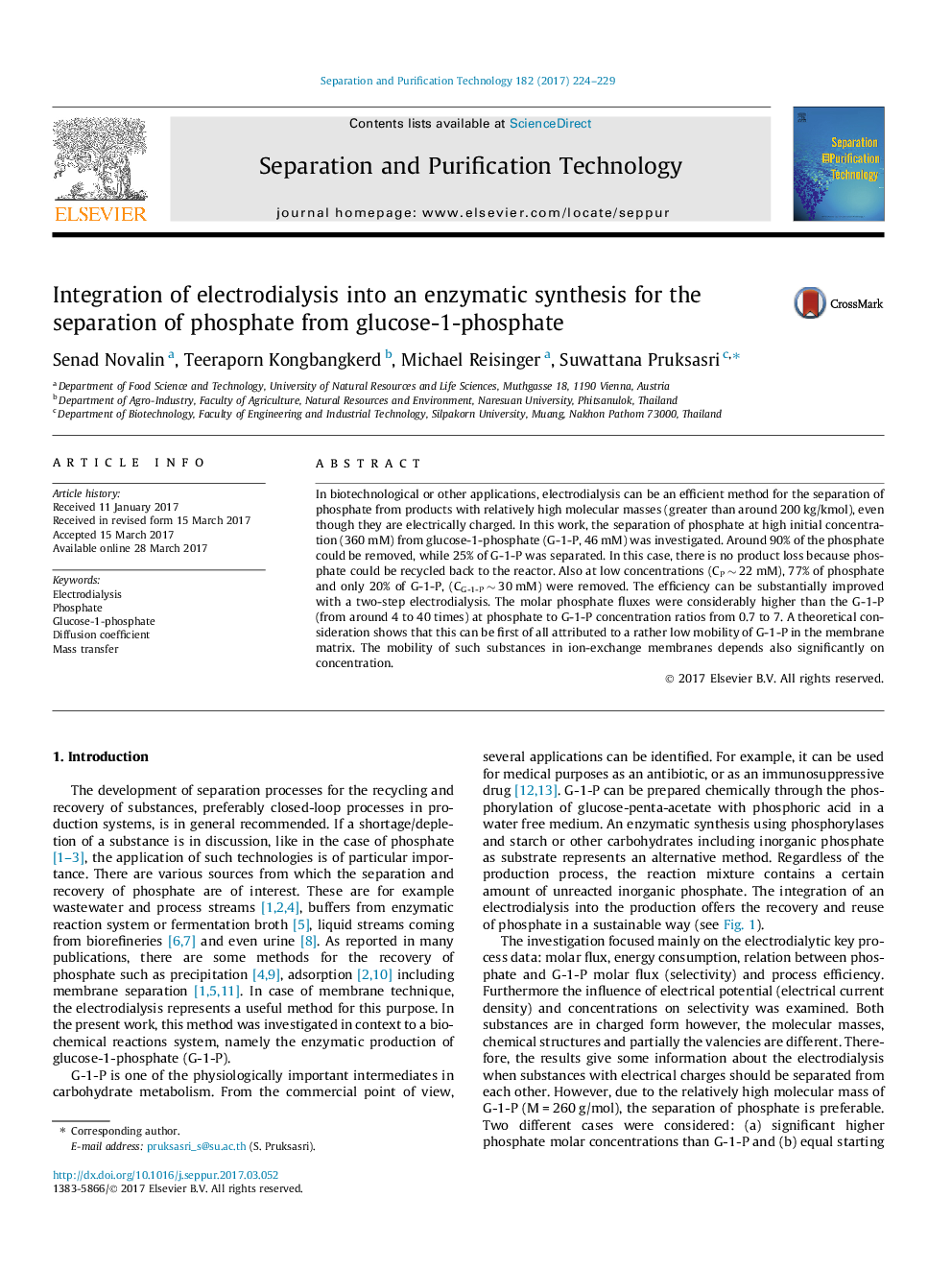| Article ID | Journal | Published Year | Pages | File Type |
|---|---|---|---|---|
| 4989862 | Separation and Purification Technology | 2017 | 6 Pages |
Abstract
In biotechnological or other applications, electrodialysis can be an efficient method for the separation of phosphate from products with relatively high molecular masses (greater than around 200 kg/kmol), even though they are electrically charged. In this work, the separation of phosphate at high initial concentration (360 mM) from glucose-1-phosphate (G-1-P, 46 mM) was investigated. Around 90% of the phosphate could be removed, while 25% of G-1-P was separated. In this case, there is no product loss because phosphate could be recycled back to the reactor. Also at low concentrations (CP â¼Â 22 mM), 77% of phosphate and only 20% of G-1-P, (CG-1-P â¼Â 30 mM) were removed. The efficiency can be substantially improved with a two-step electrodialysis. The molar phosphate fluxes were considerably higher than the G-1-P (from around 4 to 40 times) at phosphate to G-1-P concentration ratios from 0.7 to 7. A theoretical consideration shows that this can be first of all attributed to a rather low mobility of G-1-P in the membrane matrix. The mobility of such substances in ion-exchange membranes depends also significantly on concentration.
Related Topics
Physical Sciences and Engineering
Chemical Engineering
Filtration and Separation
Authors
Senad Novalin, Teeraporn Kongbangkerd, Michael Reisinger, Suwattana Pruksasri,
